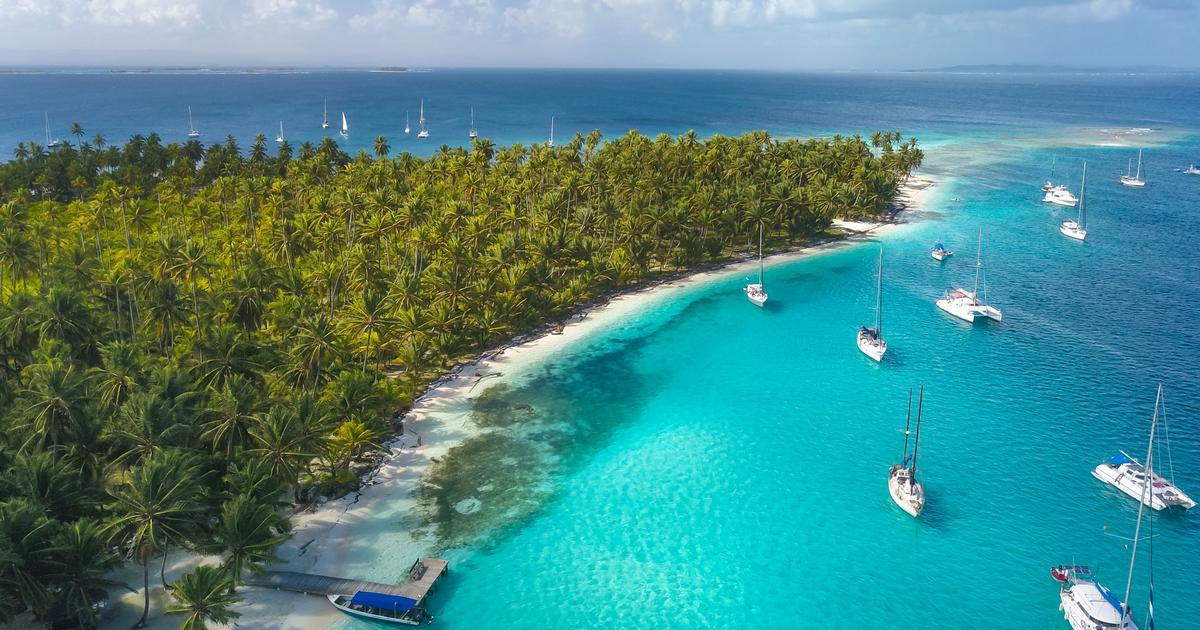Panama enjoys a tropical climate, characterized by high temperatures ranging between 20°C and 34°C throughout the year.
The country is punctuated by two seasons: a dry season, which runs from January to April, and a wet season, from May to December, with higher rainfall on the north coast, bordered by the Caribbean Sea.
To discover
Partner stay Panama and Costa Rica |
12 days |
Cruise in the heart of unspoilt nature
Read alsoPanama confidential: trip to the lost paradise of Bocas del Toro
When is the best time to go to Panama City and its region?
Pana:a City is ideally discovered between January and April.
From the capital, you can reach the archipelago of San Blas.
cratervalley
Founded in 1519, the capital of Panama is best discovered during the dry season, when the thermometer shows an average temperature of 29°C.
As you walk through the Casco Viejo, the historic center of the city listed as a UNESCO World Heritage Site, you can admire the 17th century Metropolitan Church, the Palacio de las Garzas and the wall built by the Spaniards in the 17th century.
The strategic location of the capital, halfway between tropical forests and the Pacific Ocean, makes it a showcase of the country's great biodiversity, which you can get a glimpse of by visiting the Parque Natural Metropolitano, where you can find various species of birds, tapirs, felines and alligators.
20 km south of the city is Isla Taboga, refuge of
a large colony of Latin American brown pelicans.
During a stay in Panama, a visit to the canal that has made it world famous is a must.
Observing one of the twelve thousand ships that cross the isthmus connecting the Pacific and Atlantic oceans each year is a unique spectacle that can be fully enjoyed from the observation deck of the Miraflores locks.
From the capital you can reach the archipelago of San Blas, on the border with Colombia.
These 365 sandy islets, covered in coconut palms and surrounded by the warm waters of the Caribbean Sea, are the territory of the indigenous Kuna people, who lead a largely traditional way of life.
From there, you can venture into the eastern region of Panama, home to Darien National Park, both a UNESCO World Heritage Site and recognized as a Biosphere Reserve.
Read alsoWhen to go to Colombia?
Climate, weather… The best period by region
When is the best time to go to Bocas del Toro and Northwest Panama?
The Bocas del Toro archipelago will delight diving and snorkeling enthusiasts.
JOSEPH
In the northwest of Panama, on the border with Costa Rica, is the archipelago of Bocas del Toro, known for its sublime coral reefs which delight diving and snorkeling enthusiasts.
This region benefits from an equatorial climate, marked by high temperatures throughout the year and abundant rainfall, with a slight respite between January and March.
Several islands in the archipelago are protected by the Bastimentos Marine Park, including the eponymous island which is an important nesting site for sea turtles between April and October.
Travelers looking for seaside pleasures can bathe in water at 29°C all year round.
To read alsoTravel diary in Costa Rica, curious by nature
When is the best time to go to the southwest of Panama?
From its height of 3475 m, the Baru volcano dominates Panama.
Mark
Made up of the tropical rainforest of Panama, volcanoes and coffee plantations, the southwest of the country receives less precipitation than other regions, including during the wet season.
With temperatures between 20°C and 34°C from January to December, this region can therefore be visited all year round.
To find a little freshness, take to the heights by going to Boquete, a mountain town surrounded by hiking trails around the Barú volcano, which dominates Panama from its height of 3475 m.
Look for quetzals, harpy eagles, howler monkeys and sloths.
Raft the Chiriquí River or zipline through the canopy before visiting a local coffee farm.
Further south, Santa Catalina is a small fishing village popular with surfers coming to test themselves against the waves of the
Pacific Ocean between March and October.
From there, you can go to the Coiba National Marine Park to dive in 29°C water and meet turtles, rays and a host of tropical fish.





